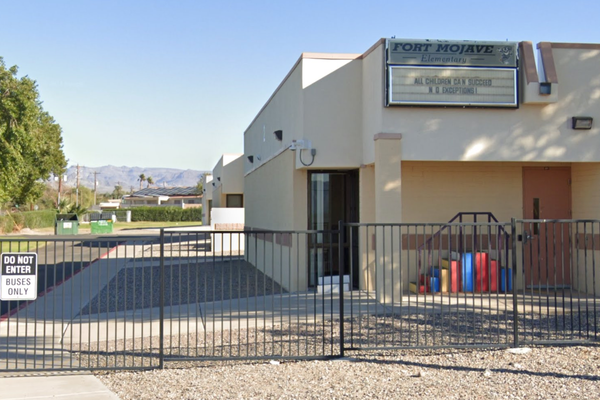Breaking a world record is a pipe dream for most of us. But for one team of people it was within touching distance of becoming a reality before the pandemic hit and put the kibosh on more than a decade’s worth of work.
Bloodhound LSR - a Bristol-built supersonic car that had been on the brink of breaking the world land-speed record - has spent the last 20 months on display at Coventry Transport Museum.
Before the pandemic, the project had been on course to beat the current world record of 763mph - achieved by Wing Commander Andy Green and the Thrust SSC in 1997 - by reaching speeds of more than 800mph (1,290kmph) during trials in South Africa. The car reached a top speed of 628mph in the Kalahari Desert in 2019.
Read next: Abandoned part of South Bristol could finally rise from the rubble
But it is a project that has been plagued with troubles since its inception. Launched in 2008, Bloodhound has had numerous owners over the years as well as major funding woes, before it was mothballed after falling into administration in 2020.
Former owner Ian Warhust sold off Grafton LSR (the parent company of Bloodhound LSR) in January 2021 after Covid “wrecked” the opportunity, he said, and a new chief executive - Stuart Edmondson, engineering operations manager of the project - took over.
To outsiders, the future of Bloodhound may look somewhat bleak - or perhaps, even, irrelevant now. But the skeleton team, which is based in Berkeley in Gloucestershire, that remains working on Bloodhound is confident there is hope yet for the project.
Mark Chapman, Bloodhound’s engineering director, certainly thinks so. “People have always asked what the relevance is,” he said. “The relevance was never just to break the world land-speed record. It has always been a focus on STEM - science, technology, engineering, and mathematics - and engagement and showcasing science and tech.”
However, the project will remain dormant until it secures the funding needed - around £10m - to get it off the ground.
“Since Covid, there have been far more important things going on in the world than trying to raise funding for the land-speed record, which is why it is paused,” he added.
According to Mr Chapman, the focus is still on STEM and future technologies, but with it has come a major step-change for the project; it is now aiming to be carbon zero. When Bloodhound originally launched it was a jet-fuelled car with a hybrid rocket. Today, the vehicle has an electric motor with a battery charging system to run the fuel pump for the rocket. And the rocket itself is no longer hybrid - it’s powered by steam and oxygen.
Mr Chapman remains tight-lipped about the supplier of the battery, but says the evolution of technology in the last few years has allowed for the change in approach. He also denies the project is changing its sustainability focus to attract an investor.
“It’s not a greenwashing thing in that we didn’t get money when we were burning jet fuel, so we are trying something else - it’s very much that this is the future technology and it’s where the world needs to go. If Bloodhound has the opportunity to showcase the technology then so much the better. It makes us more relevant.”

The discussions to become electric have been going on since 2019, according to Mr Chapman, but have come to fruition since the start of lockdown.
“We still have a jet engine that has to burn hydrocarbon but the route for that is now very different. We are very conscious of our carbon footprint and were looking to use bio-derived aviation fuel.
“The problem we had with that is if you look at the carbon footprint of transporting 2,000 litres of aviation fuel from the UK to South Africa, it is colossal. So we are now using synthetic aviation fuel which is a very different technology. You harvest CO2 from the atmosphere to create that.”
Mr Chapman said Bloodhound is working with a “number of industrial partners” on the synthetic fuel, but will not disclose who. However, he said the fuel the project would use could be created out in the desert using renewable energy. “The car does have multiple fuels but they are all carbon neutral, which is a step change from when we were running [trials] in South Africa.”
Despite not testing the new battery-powered vehicle yet, the Bloodhound team is also confident the car will still be able to achieve the world land-speed record using green tech and renewable fuel.
“The changes to the electric power train for the rocket and the rocket becoming a monopropellant still provides us with ample thrust so our target speed is still 800mph plus,” said Mr Chapman.
'There is a very strong chance of it coming back to Bristol'
Any record attempt is still some way off. The project is completely gated by funding; an attempt would be 18 months after the cash is received - but when that will be still remains a question. There’s been no funding for the car in 2022, despite a small team of four or five people working quietly behind the scenes on the project.
“The investor needs to be the right person,” explained Mr Chapman. “There is so much going on in the world at the moment this isn’t a priority but for the right person [it could be]. It’s a lot of money but it’s probably going to be the cheapest land-speed record anyone could buy into as the tech is already verified. We have the ability to showcase new technology and we are absolutely at the forefront of sustainable aviation and sustainable rocketry.”
An 18km-long, 1,500m-wide racetrack has already been built at Haskeen Pan in South Africa, ready for the record attempt. The plan, added Mr Chapman, is for the track to become an international resource other people can use for high-speed events in the future once the world land-speed record is complete.
Despite the uncertainty of Bloodhound's future, Mr Chapman believes a revived project would remain in the South West - where it was born. “We have always been remarkably welcomed in the South West, be that Bristol or in Gloucester. I would see that as its natural home. Most of the team are from around the Bristol area and we did a rocket trial in Newquay in Cornwall.
“There is a huge amount of heritage for us being based in the West of England. Should the funding come in I think there could be a very strong chance of it coming back to Bristol.”
Get the best stories about the things you love most curated by us and delivered to your inbox every day. Choose what you love here.







